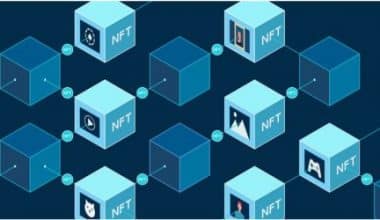Bitcoin faucets are websites or applications that distribute small amounts of Bitcoin to users in exchange for completing tasks. With a historical background dating back to 2010, Bitcoin faucets were created as a promotional tool to spread awareness about Bitcoin and encourage its adoption.
Today, Bitcoin faucets continue to play a significant role in the cryptocurrency community, providing an easy way for users to earn small amounts of Bitcoin and learn about the digital currency. In this article, we will define Bitcoin faucets, explore their historical background and purpose, and highlight their importance in the cryptocurrency ecosystem.
In this article, we will delve into the definition of Bitcoin faucets, explore their historical background and purpose, and highlight their importance in the cryptocurrency ecosystem.
How Bitcoin Faucets Work
Bitcoin faucets operate by distributing small amounts of Bitcoin to users in exchange for completing simple tasks or captcha challenges. Users typically visit the faucet website or app, complete the task, and then receive a reward in the form of a small fraction of a Bitcoin. The tasks can vary but commonly include solving captchas, clicking on ads, or completing surveys.
To prevent abuse and fraud, many Bitcoin faucets implement anti-bot measures, such as captchas, to ensure that tasks are completed by humans and not automated bots. Captchas are challenges designed to verify that the user is a human and not a bot attempting to manipulate the faucet for unfair gains. Some faucets also implement additional security measures, such as limiting the number of claims per day or requiring users to register an account.
In terms of reward systems, Bitcoin faucets may offer different payout structures, such as fixed amounts or variable rewards based on the current Bitcoin price. Some faucets also offer referral programs, allowing users to earn additional rewards by referring new users to the faucet. Moreover, with the help of Rollercoin, you can now mine Bitcoin while playing free games. This is quite rare to find, so I thought of recommending this to Bitcoin enthusiasts.
Strategies for Using Bitcoin Faucets
To make the most of Bitcoin faucets, users can employ various strategies to maximize their earnings. This includes regularly checking for new faucets, as new ones may offer higher rewards or more favorable reward structures.
Users can also take advantage of referral programs by referring friends or other users to the faucets, earning additional rewards for each referral. Additionally, users can increase their earnings by completing tasks quickly and efficiently and by avoiding faucets with high withdrawal fees.
While using Bitcoin faucets, it’s essential to practice good safety measures to protect against potential risks. This includes using strong and unique passwords for faucet accounts, enabling two-factor authentication (2FA) if available, and being cautious of phishing attempts or malicious websites posing as legitimate faucets.
Users should also avoid sharing their personal information, such as their Bitcoin wallet address or private keys, on untrusted faucets or other online platforms. Regularly updating software and keeping antivirus and anti-malware tools up to date can also help prevent security breaches.
In the following section, we will discuss the pros and cons of using Bitcoin faucets in the cryptocurrency ecosystem.
Pros and Cons
Pros of Bitcoin Faucets
1. Easy Entry into the Cryptocurrency World: Bitcoin faucets provide a simple and accessible way for beginners to enter the world of cryptocurrencies. Users can earn small amounts of Bitcoin without having to invest any money or make significant commitments, allowing them to learn about cryptocurrencies and how they work.
2. Potential for Earnings: While the earnings from Bitcoin faucets may be small, they can add up over time. With the right strategies, users can maximize their earnings and accumulate a decent amount of Bitcoin, which can be used for various purposes, such as trading or investing.
3. Availability of Different Types of Faucets: Bitcoin faucets come in different types, including standalone faucets, faucet networks, and micro wallet faucets. This provides users with options and variety, allowing them to choose faucets that best suit their preferences and needs.
Cons of Bitcoin Faucets
1. Low Earnings: Despite the potential for earnings, Bitcoin faucets generally offer small rewards, often in the form of Satoshi (the smallest unit of Bitcoin), which may not be significant in terms of value. Users may need to spend considerable time and effort to accumulate a meaningful amount of Bitcoin.
2. Captchas and Anti-Bot Measures: Bitcoin faucets often use captchas and anti-bot measures to prevent abuse and fraud. These measures can be time-consuming and tedious, making the earning process less efficient and frustrating for users.
3. Scam and Fraud Risks: Not all Bitcoin faucets are legitimate, and some may be scams or fraudulent. Users need to exercise caution and thoroughly research and verify the authenticity and reputation of a faucet before using it to avoid falling victim to scams or losing their earnings.
4. Security Risks: Using Bitcoin faucets may expose users to security risks, including potential data breaches, phishing attempts, or malicious software. Users need to follow best practices for staying safe online and protecting their personal information and Bitcoin wallet.
Conclusion
Bitcoin faucets have played a unique role in the cryptocurrency ecosystem by providing a simple and accessible way for beginners to earn small amounts of Bitcoin and learn about cryptocurrencies. They offer potential earnings, variety in types of faucets, and easy entry for newcomers. However, there are also limitations, including low earnings, captchas, anti-bot measures, scam risks, and security risks.
To make the most out of Bitcoin faucets, users should follow tips for maximizing earnings, practice best practices for staying safe online, and thoroughly research and verify the authenticity of faucets. It’s important to exercise caution and be aware of potential risks associated with using Bitcoin faucets.






